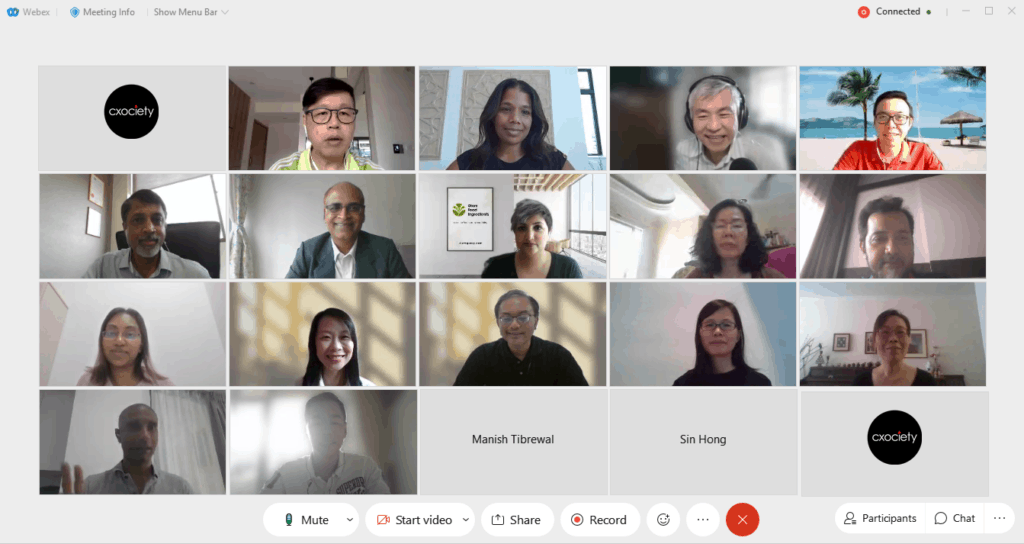The pandemic gave new meaning to financial agility. It became vital as companies pivoted, recalibrated their financial models, and looked to withstand market shocks.
For financial leaders, this shift in meaning created challenges. They had to reimagine how they operate, balance cost containment and revenue optimization, and accelerate their transformation into a business partner.
A recent virtual roundtable, titled “Creating and Mastering Financial Agility,” looked to find out how well ASEAN financial leaders mastered financial agility during the pandemic. Hosted by FutureCFO and the Association of Financial Professionals, it saw senior heads of finance discuss the pandemic’s challenge to financial clarity and critical lessons learned that went beyond financial.

Participants also shared how technologies freed financial professionals to become more effective, the importance of upskilling and sharing experiences, and the changing role of the CFO office within their companies.
The race for clarity
When COVID-19 hit the Asia Pacific region, market outlooks became clouded. The region stopped operating on previous market assumptions; new risks involving personal and country legislation impacted financial models. As a result, every company sought financial clarity.
These factors made “insights-driven finance” necessary, said Himashi Soriano, managing director for APAC at Association for Financial Professionals (AFP). As a result, inefficiency, especially the over-reliance on manual processes and spreadsheets, became a crutch.
Anil Mungad, chief financial officer at Recron Malaysia, mentioned that Malaysia continues to face challenges due to Covid and has undergone various phases of lockdown, affecting some of the operations due to limits in manpower utilisation, lower demand in domestic markets and an increase in raw material prices due to the imbalance in supply and demand.
He noted that most of their raw materials are based on crude, which had a substantial drop as travel stopped during the early days of COVID-19, then subsequently rising since May 2020 and jumping rapidly in recent months due to market dynamics.
Furthermore, sudden spurts in COVID cases in Malaysia from time to time has limited their downstream operations due to various restrictions.
“The continued intense focus on costs, operational efficiency and market placement coupled with financial prudence has helped us sustain in these tough times. For example, zero-based budgeting used by our team members to see a substantial reduction in all costs including fixed costs in all areas,” said Mungad.
For Shian Goh, the finance director at Teckwah Industrial Corporation Pte Ltd, it was time to clear out financial inefficiencies. So, he, like many other participants, is exploring robotic process automation (RPA), speeding up processes, and reducing (or even eliminating) human involvement (like getting wet signatures for approvals).
Planning times had to be reduced. “We had to move away from annual, half-yearly, or the quarterly forecasts; become nimbler as the business environment changed daily. Forecasts were updated weekly to adjust and reflect what opportunities each day brought,” said a finance director at another Singapore company.
AFP’s Soriano observed that the pandemic essentially meant that market assumptions and expectations that companies operated against in the past “changed constantly.”
“Companies needed to prioritize the forecast components, to figure out what was more volatile. So, they can create efficiencies, even though they were asked to do more. A lot of them were applying driver-based forecasting and created a more efficient workflow,” she explained.
Driver-based forecasting also saw financial leaders take charge of their organizations’ direction. “It put finance at the forefront,” added Soriano.
Lessons from pandemic struggles
It was not just external factors that impacted financial leaders. They also had to do some soul searching on how they operated in the past.
For example, participants noted that they had to trust more as financial leaders, especially when working remotely. “You're kind of forced to trust everybody that they will get their jobs done,” said Techwah’s Shian.
Trust is hard, and not just because financial leaders are the trusting type. With remote working, visual cues and other interactions were cut off. “We lost the physical interactions that bonded people. So, we had to actively rebuild this with our management team,” said Chong Soon Lock, the finance director at Adidas Malaysia.
“There is also the distance,” pointed out Steven Ho, the finance director at TVS Asianics. It meant that Ho had to shift toward an outcome-based approach when working with the remotely based team.
All these factors added additional stress on already-overloaded financial teams. “Even as you talk to them over Teams, they get stressed out if the operations don't work, or if they are unable to access data,” observed Lilian Tan, the head of the finance department at the International Medical University.
While the additional stress is never welcome, it did highlight another factor in financial operations that often get overlooked: team skills.
“It was a good time to evaluate whether you have the right skills on your team and whether they are performing at the highest levels,” said AFP’s Soriano.
This assessment became increasingly important as companies relied more on their financial teams to make hard operational decisions. Good assessment results help companies and their employees to stay calm and not panic, which for Jeffery Mohamad Akhir, the group chief financial officer at Strateq Group, is the most important takeaway of the pandemic.
“If you can step back and look at what we have, and look at what are we facing, then we can plan ahead and do better,” he added.
Part of building this trust is ensuring the financial team’s capabilities. With every day bringing fresh challenges, these teams need to ensure that their skills are up to date, said Doreen Lee, the chief financial officer at Hap Seng Trucks Distribution, and Anjli Shah, head of FP&A at Olam Food Ingredients.
It is an area that organizations like AFP advocate. But AFP’s Soriano went further to point out another aspect of professional development that often gets missed — experience sharing.
She noted that in a challenging business environment, financial leaders need to ask the right questions. However, asking the wrong ones can even create missed expectations and financial strain.
“Experience is still our best teacher. For example, projects that are smaller in scale also make for good educational opportunities. The process of discovery, the effort required to implement, and education of using the new system or process can really move a team ahead. The learning really happens in the search for answers and finding the expertise; this can be even more valuable if that requires reaching out to experts from other teams, which helps with developing relationships, building trust, and eventually becoming that trusted business partner,” Soriano explained.
Automation offers new benefits
Financial teams have always had a unique vantage point: the financial data they deep dive into allows them to understand their organization's financial options and health. It is one reason why hunting for financial data is a lifelong job for many financial professional teams.
The pandemic made this data acquisition more urgent, as financial teams were asked to develop more forecasts for different users. But manual processes got in the way, and yesteryear spreadsheets introduced errors and used up time financial teams could not afford.
It is one reason why Ong Sin Hong, the vice president for finance at Natsteel Holdings, felt that automation has become more critical after the pandemic — and not just for taking over replacing manual processes.
“If we can do more robotic automation, and we can then upskill people to do things more efficiently and independently,” said Ong.
International Medical University’s Tan echoed Ong’s opinion, sharing that her organization embarked on RPA for financial efficiency.
“We deployed robotic process automation for the accounts payable. As a result, the staff said they were happy and allowed them to add more value,” said Tan.
Hazel Jerusha, head of finance KL and FP&A Business Partner at World Vision, is pushing their automation drive even further. For example, the company is now looking to automate AR and accounts reconciliation.
“We are sending out the message to our staff that we want to give back time for more value-added tasks, rather than spending it on data entries. Over time, they also saw that their opinions mattered and were valued,” added Jerusha.
These value-added skills are going to matter as CEOs demand more financial clarity. AFP’s Soriano highlighted four critical skills that financial leaders should focus on: data analytics, data interpretation, storytelling, and business partnering.
“The days of simply handing over statistics and crunching numbers are behind us. Finance is in the driver's seat and needs to help their organizations understand, set, and reach business goals. So, these skillsets can change the entire direction of your organization to reach growth and operational efficiency,” she concluded.
It’s what financial leaders will need as they start navigating uneven recoveries and a market where political agendas have significant effects.




